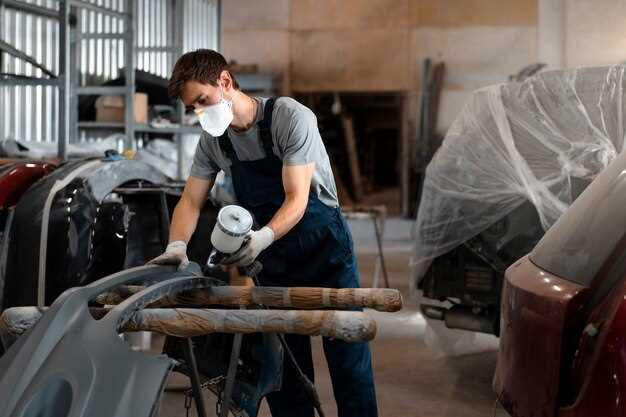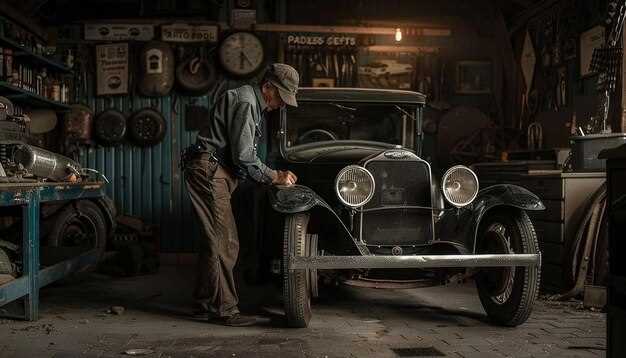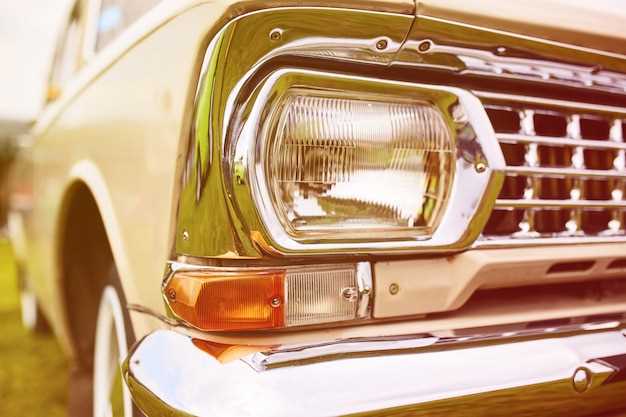Starting a Business Restoring Classic Cars

Entering the world of classic car restoration can be both a rewarding and profitable venture for those passionate about automobiles. As a business startup, it offers not only the opportunity to work with timeless vehicles but also the chance to connect with fellow car enthusiasts who appreciate the artistry and craftsmanship of restoration. However, launching such a business requires careful planning, a deep understanding of the market, and a commitment to quality.
The classic car restoration industry has seen significant growth over the years, driven by an increasing interest in vintage cars as investment opportunities and collectibles. To establish your own restoration business, you need to identify your target audience, develop a comprehensive business plan, and decide on the specific services you will offer. From minor repairs to complete overhauls, the scope of your services will determine your niche within the market.
In this guide, we will explore the essential steps for starting a classic car restoration business, including securing funding, sourcing materials, and marketing your services effectively. By the end, you will have a clear roadmap to transform your passion for classic cars into a thriving enterprise.
Identifying Your Target Market for Classic Car Restoration

Identifying your target market is a crucial step in establishing a successful classic car restoration business. By understanding who your potential customers are, you can tailor your marketing strategies, service offerings, and overall business model to meet their specific needs.
First, consider the demographics of vintage automobile enthusiasts. These individuals often fall into certain age groups, usually ranging from 30 to 65 years old, with a penchant for nostalgia and a passion for the craftsmanship of classic vehicles. They may possess disposable income, allowing them to invest in restoration projects as a hobby or investment opportunity.
Next, analyze the geographic location of your target market. Classic car enthusiasts are often clustered in areas with a strong car culture or regional car shows. Identifying local car clubs, events, and online communities can provide insight into the interests and needs of potential customers near your startup.
Additionally, assess the interests and preferences of your target audience. Some customers may seek showroom-quality restorations to showcase at car shows, while others may be more interested in functional restorations that enhance daily driving experiences. Understanding these preferences will help shape your service offerings, pricing, and marketing messages.
Engaging with potential clients through social media platforms and classic car forums can also provide valuable insights. These interactions allow you to gauge interest in specific types of restorations, preferred styles, and the overall budget customers are willing to allocate for these projects.
Finally, consider the competitive landscape. Understand what other restoration businesses offer and identify gaps in the market that your startup can fill. By analyzing competitors, you can find unique selling points that align with the demands of your target audience.
By thoroughly identifying and understanding your target market for classic car restoration, you position your business for success and ensure that your services resonate with those who share a passion for these timeless machines.
Essential Tools and Equipment for Your Restoration Workshop

Starting a classic car restoration business requires a well-equipped workshop to handle various restoration tasks efficiently. Here’s a list of essential tools and equipment that every restoration startup should consider investing in:
1. Hand Tools: A comprehensive set of hand tools is crucial for any restoration project. Include wrenches, sockets, pliers, screwdrivers, and hammers. These tools are fundamental for disassembling and assembling components accurately.
2. Power Tools: Power tools, such as drills, impact wrenches, and grinders, speed up the restoration process. They are perfect for tasks like removing rust, drilling holes, and cutting metal. Invest in high-quality power tools for longevity and performance.
3. Welding Equipment: Restoring classic cars often requires metal fabrication and repair. A reliable welder, such as a MIG or TIG welder, is essential for joining metal parts. Ensure you also have welding helmets and protective gear to ensure safety.
4. Lifting Equipment: A hydraulic lift or jack is important for accessing the undercarriage of cars. Lifting equipment enhances safety and makes it easier to work on various sections of the vehicle during restoration.
5. Paint Equipment: A spray gun, compressor, and a paint booth are necessary for applying finishes to restored vehicles. Quality paint equipment ensures a smooth and professional finish, which is vital for customer satisfaction.
6. Diagnostic Tools: A diagnostic scanner and multimeter assist in troubleshooting electrical issues. These tools are invaluable for ensuring that restored vehicles are not only aesthetically pleasing but also mechanically sound.
7. Storage Solutions: Shelving units, toolboxes, and parts bins help organize tools and components efficiently. Proper storage solutions save time and enhance productivity by keeping the workspace tidy.
8. Safety Equipment: Safety should always be a priority in a restoration workshop. Invest in gloves, goggles, dust masks, and fire extinguishers to create a safe working environment for you and your team.
Equipping your restoration workshop with the right tools and equipment is crucial for the success of your classic car restoration startup. This investment not only streamlines the restoration process but also sets the foundation for a thriving business.
Marketing Strategies to Attract Classic Car Enthusiasts
Starting a classic car restoration business requires not only a passion for automotive history but also a solid marketing strategy to attract potential clients. Understanding the classic car community is crucial for your startup’s success. Here are effective marketing strategies tailored to reach classic car enthusiasts.
1. Build a Strong Online Presence
Create a professional website showcasing your services, completed projects, and customer testimonials. Optimize your site for search engines with keywords related to classic car restoration. Utilize social media platforms like Instagram and Facebook to share visually appealing content. Posting before-and-after images of restorations can significantly engage potential clients.
2. Attend Car Shows and Festivals
Participate in local and national car shows to network with classic car enthusiasts. Set up a booth to display your work and offer brochures or business cards. This face-to-face interaction helps build trust and showcases your expertise, making it easier to attract clients.
3. Leverage Online Forums and Groups
Join online communities dedicated to classic cars, such as forums and Facebook groups. Share your knowledge, engage in discussions, and subtly promote your services. Authentic participation can position you as an expert and attract potential customers seeking restoration expertise.
4. Create Engaging Content
Start a blog or a YouTube channel where you share tips, restoration insights, and project updates. Valuable content not only builds credibility but also encourages sharing, leading to greater visibility for your business. If you can attract a dedicated following, you’ll create a community that is more likely to consider your services.
5. Offer Free Workshops or Demonstrations
Host free workshops where enthusiasts can learn basic restoration techniques. This not only showcases your expertise but also fosters community engagement. Attendees may refer to your business when they need professional help, creating a pathway for future clients.
6. Utilize Email Marketing
Collect email addresses through your website or at events. Send out newsletters featuring restoration tips, upcoming events, and promotional offers. A well-curated email list allows you to communicate directly with interested parties and keep your business on their radar.
7. Partner with Local Automotive Businesses
Collaborate with local parts suppliers, car clubs, and dealerships to expand your reach. Joint promotions or referral programs can help you tap into established networks of classic car enthusiasts who may be looking for restoration services.
By employing these targeted marketing strategies, your classic car restoration startup can effectively engage with enthusiasts and build a loyal customer base. Focus on building relationships within the community to foster trust and establish your reputation as a go-to restoration expert.



